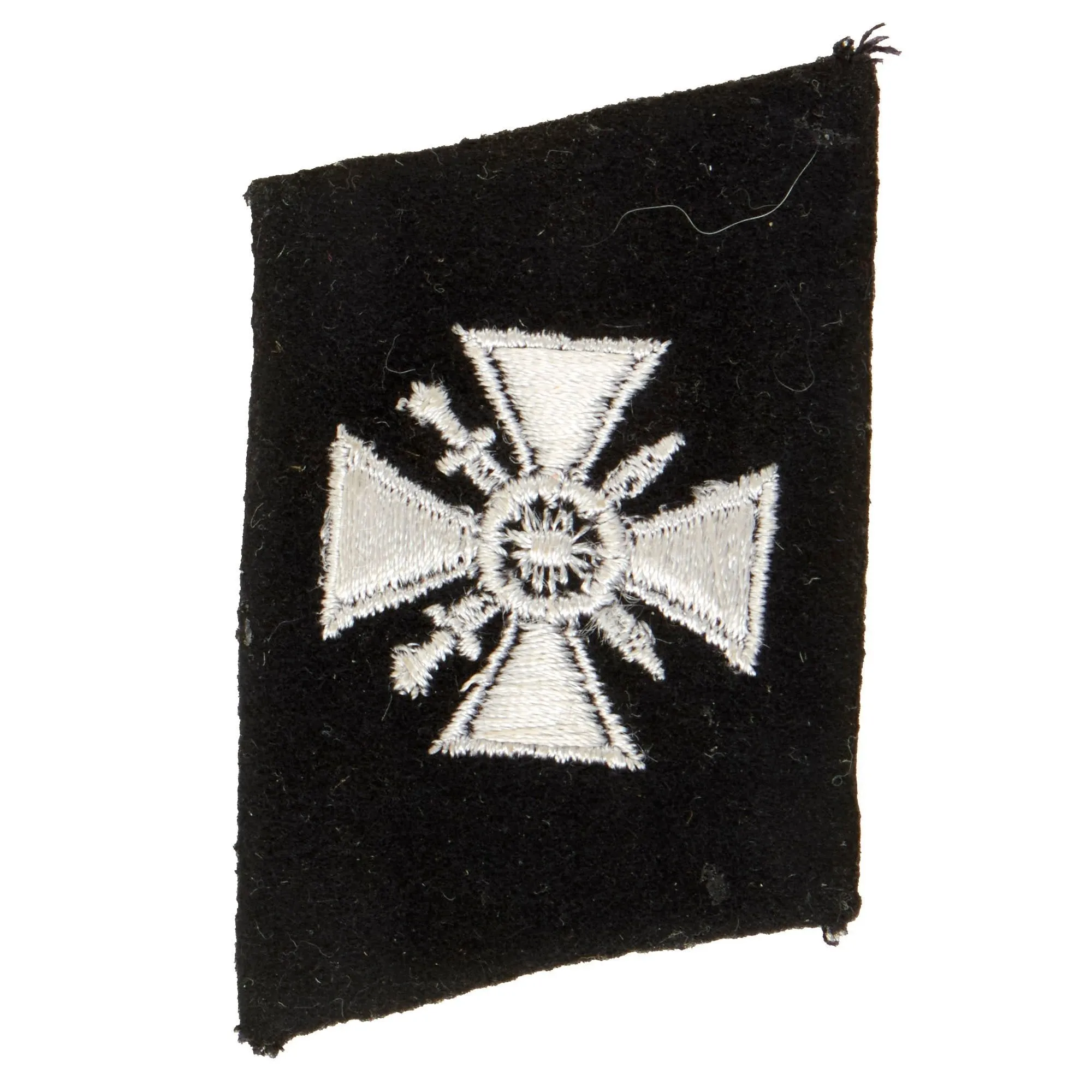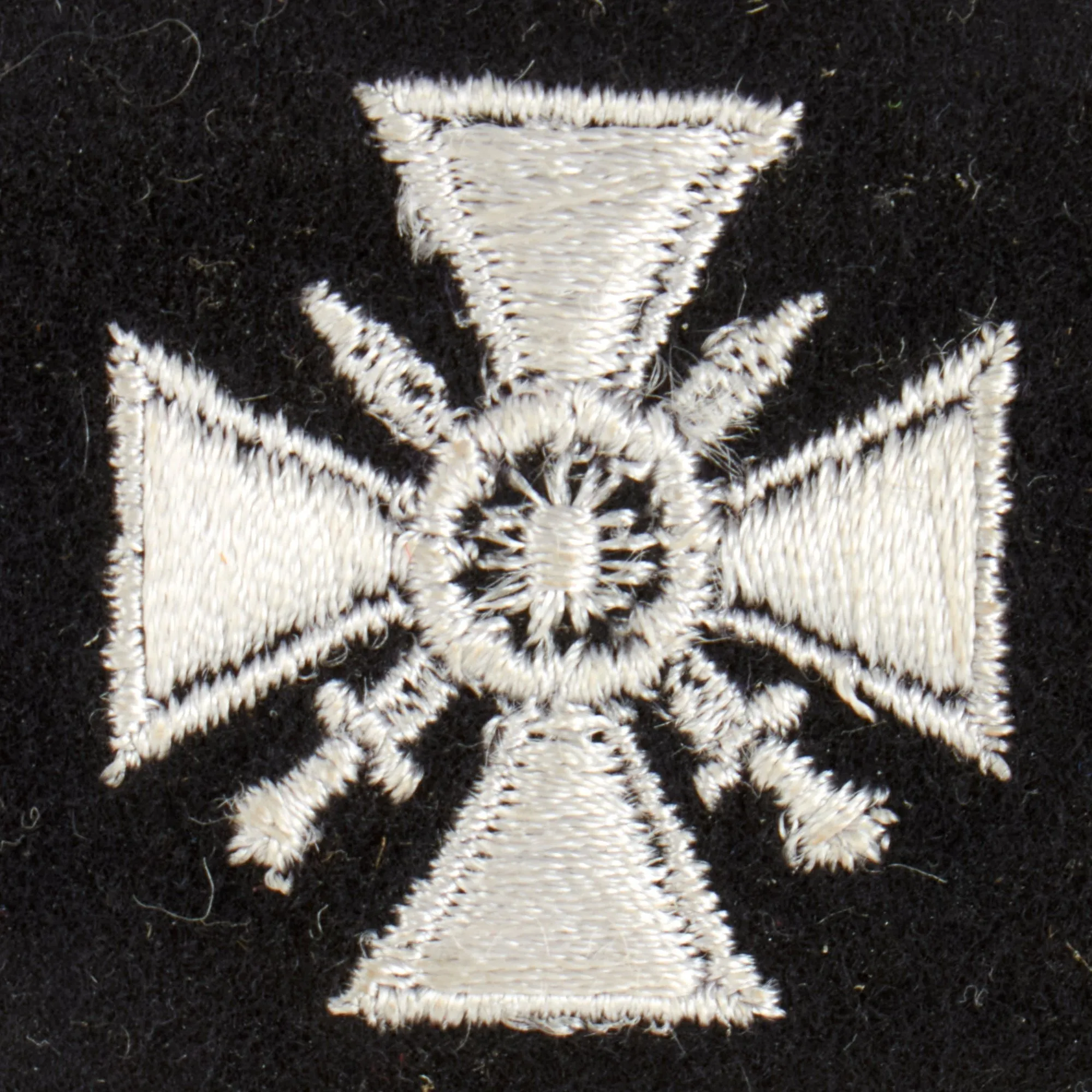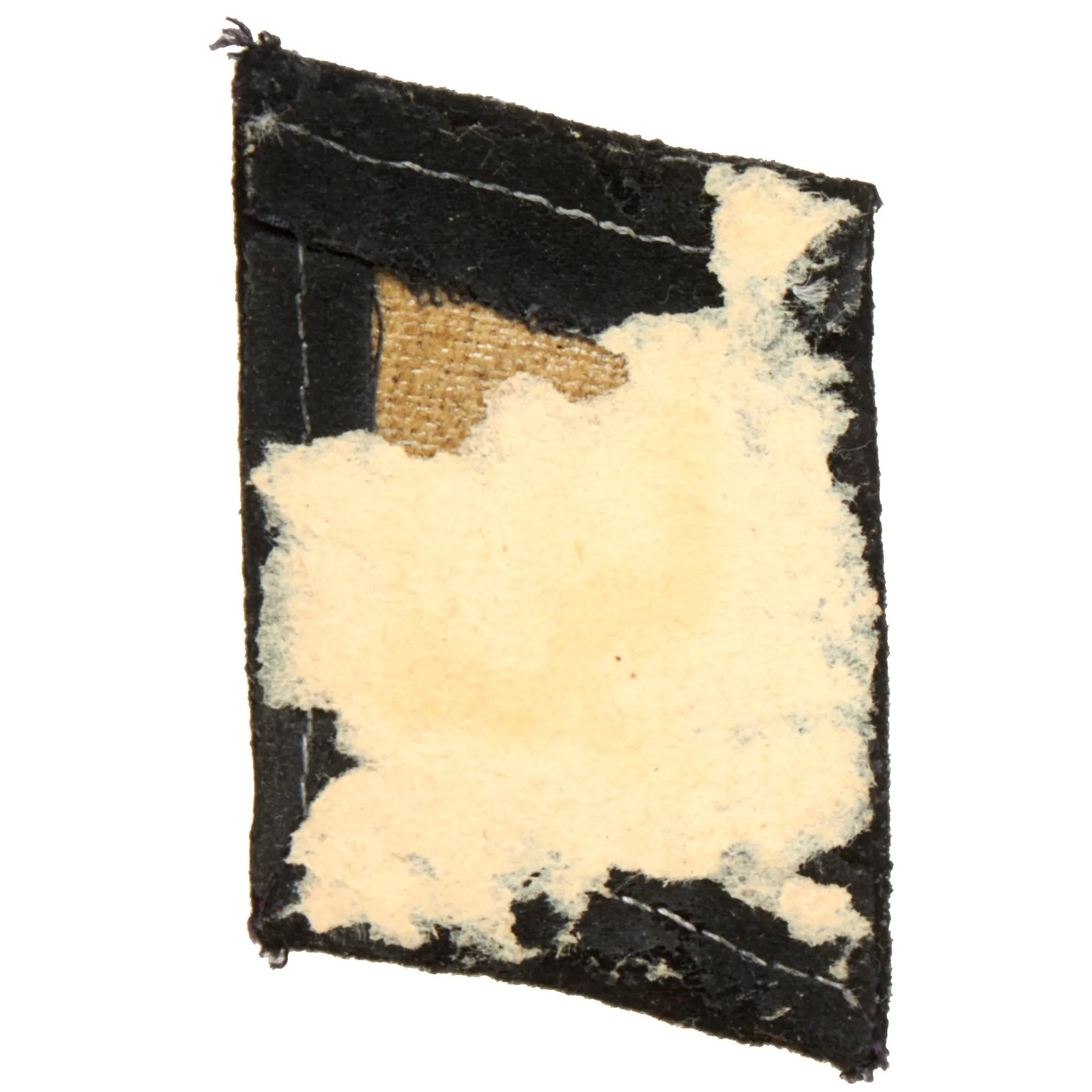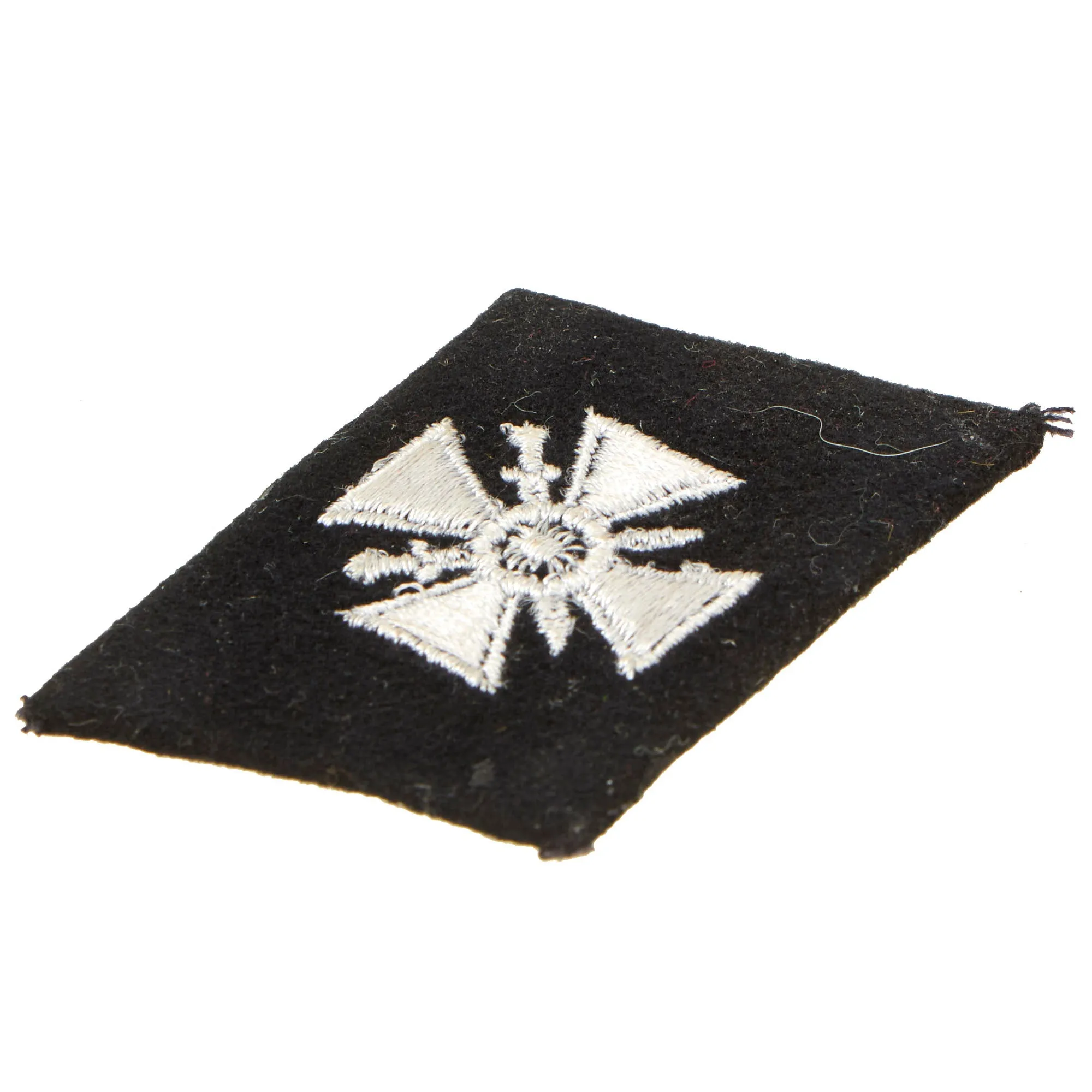Original Item: Only One Available. Here we have an excellent right side Collar Tab, used by the short-lived 29th Waffen Grenadier Division of the SS RONA (1st Russian). Known as Kragenpatte in German, these were attached to the collars to indicate the rank and branch of the wearer. The tab is a parallelogram with sides measuring 2 1/2" x 1 1/2". This example shows a central Tatzenkreuz (cross pattée), intended to be a stylized Cross of St. George, with two crossed swords going through the center, where there is a small emblem. This was originally a lancer on a horse over a dragon, however it was implified to a starburst for the collar tab. Like most SS collar tabs it is made of black fabric with silver thread and an internal lacquered buckram fabric stiffener.
We have heard that many of these were made at the Dachau camp, and many were recovered at the end of the war when the camp was liberated. There is however no concrete evidence regarding this.
The insignia is in excellent condition, and does not look to have been attached to a uniform, however it does look to have been glued to some type of display board in the past, which stuck to the back of the collar tab. Ready to add to your collection!
The 29. Waffen-Grenadier-Division der SS „RONA” (Russische Nr. 1), also known as the Russian Liberation People's Army (Russian: Русская освободительная народная армия, РОНА; transcription: Russkaya osvoboditel'naya narodnaya armiya, RONA), and as the Kaminski Brigade, was a collaborationist formation composed of Russian nationals from the territory of the Lokot Autonomy in Axis-occupied areas of the RSFSR, Soviet Union on the Eastern Front. It was known for loose discipline, drunkenness and extreme brutality, which shocked even hardened SS veterans.
It was founded in late 1941 as auxiliary police with 200 personnel. By mid-1943 it had grown to 10,000–12,000 men, equipped with captured Soviet tanks and artillery. Bronislav Kaminski, the unit's leader, named it the Russian People's Liberation Army. With a forced mobilization of the locals to his militia in 1942, Kaminski turned it into a sort of a small regular army of the Lokot Autonomy, or the "Lokot Republic", and into a "private" army subordinate personally to him.
After the Wehrmacht lost the Battle of Kursk in August 1943, RONA personnel retreated to the territory of Byelorussia, especially to the Lepel area of Vitebsk, where they participated in German security operations, committing numerous atrocities against the civilian population. The unit was absorbed into the Waffen-SS in June 1944. After Operation Bagration (June to August 1944), the RONA retreated further west, and by the end of July 1944, the remains of the Kaminski unit (3 to 4 thousand—some sources estimate 6 to 7 thousand) assembled at the SS training camp at Neuhammer (now Świętoszów). On the base of the Kaminski unit, SS leaders planned to form an SS division – the 29th Waffen Grenadier Division of the SS RONA (1st Russian).
The Warsaw Uprising began on the same day that Heinrich Himmler signed an order for the establishment of the division (1 August 1944). The division formation was never implemented and part of the brigade was sent to Warsaw, where the unit again committed numerous atrocities. It murdered 10,000 Poles on the 19th of August alone.[8] Kaminski was later executed on the orders of Himmler. By August 27, 1944, having found the brigade too undisciplined and unreliable, the German commanders removed it from Warsaw. The unit was sent to Slovakia, and deployed against Slovak partisans. After the end of October 1944 the brigade was disbanded and the remaining personnel absorbed into General Andrey Vlasov's Russian Liberation Army.










![Ocean Breeze Marine Speaker Spacer f/Infinity Reference Series 8" Speakers - 1" - Black [IF-RS-800-100-BLK] Ocean Breeze Marine Speaker Spacer f/Infinity Reference Series 8" Speakers - 1" - Black [IF-RS-800-100-BLK]](https://www.voyagio.shop/image/ocean-breeze-marine-speaker-spacer-finfinity-reference-series-8quot-speakers-1quot-black-if-rs-800-100-blk_sKMozZ_300x.webp)







